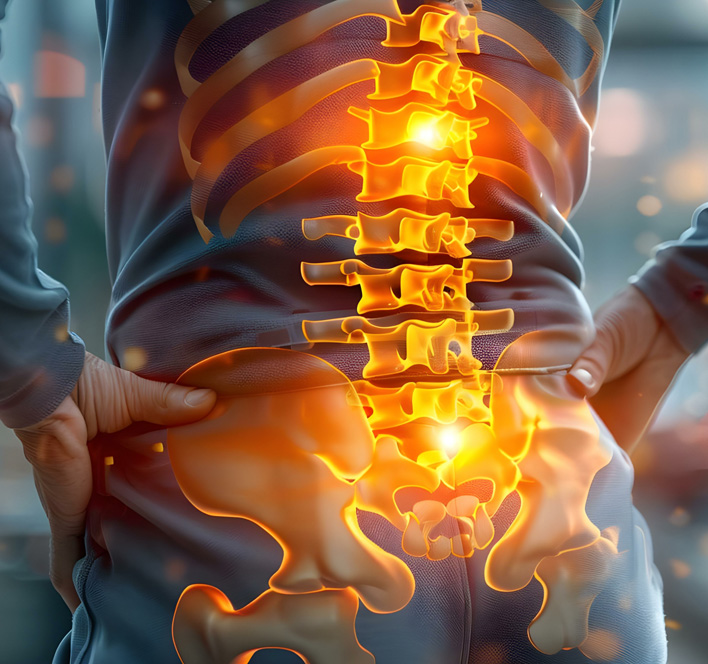Spinal stenosis, a condition marked by the narrowing of spaces within your spine, can put pressure on the nerves that travel through the spine, often resulting in pain, numbness, or even weakness in the legs, arms, or torso. While the structural changes in the spine cannot usually be reversed without surgical intervention, the symptoms can often be effectively managed with the right approach. This highlights the importance of understanding the condition and exploring the available treatment options to manage symptoms and improve quality of life.
The team at NJ Spine & Orthopedic specializes in addressing the complexities of spinal conditions like spinal stenosis. Our team is equipped with the knowledge and technology to offer a range of treatments, from non-surgical methods aimed at symptom relief to advanced surgical procedures that can address the structural causes of stenosis. We’re here to guide you through understanding your condition and selecting the most appropriate treatment path for your unique situation.
Understanding Spinal Stenosis
Spinal stenosis occurs when the spaces within your spine narrow, which can compress the nerves and cause discomfort. This condition is most commonly caused by age-related changes in the spine, such as osteoarthritis and the thickening of ligaments. Symptoms can vary widely among individuals, ranging from mild discomfort to severe pain and mobility issues.
The progression of spinal stenosis can be gradual, and many people might not notice the increasing severity of their symptoms until they become more pronounced. Common symptoms include pain in the back or neck, numbness or tingling in the extremities, and in severe cases, difficulty walking or loss of bladder or bowel control.
For those diagnosed with spinal stenosis, it’s essential to understand that while the physical narrowing of the spine may not be reversible without surgery, the symptoms can be managed. Treatment options are tailored to the individual’s specific symptoms and the severity of their condition. These can range from physical therapy and medication to manage pain and inflammation, to more advanced options like minimally invasive surgery to relieve pressure on the nerves.
Treatment Options for Spinal Stenosis
The approach to treating spinal stenosis typically starts with the least invasive options. Physical therapy, for example, can help strengthen the muscles around the spine, improving support and flexibility. Additionally, medications may be prescribed to reduce inflammation and pain. For those whose symptoms persist despite these efforts, more advanced treatments may be considered.
Epidural steroid injections are another non-surgical treatment option that can provide relief. These injections can help reduce inflammation around the nerves, offering temporary relief from pain and discomfort. However, it’s important to note that while these injections can be effective, they do not address the underlying cause of the narrowing.
When non-surgical methods are not enough to manage symptoms effectively, surgery may be considered. At NJ Spine & Orthopedic, we specialize in minimally invasive spine surgeries that can directly address the structural issues causing spinal stenosis. These procedures, such as laminectomy or spinal fusion, aim to relieve pressure on the nerves by creating more space within the spinal canal.
Choose NJ Spine & Orthopedic For Your Spinal Stenosis Treatment
Choosing the right treatment for spinal stenosis requires a comprehensive understanding of the condition and the available options. We employ the latest in medical technology and techniques to ensure that you receive the most effective treatment with the least amount of disruption to your life. Our minimally invasive procedures are at the forefront of spinal treatment, offering a safer alternative to traditional open surgery with faster recovery times and less postoperative discomfort.
With patients coming from across the nation, our Concierge Team is here to make your journey toward recovery as smooth as possible, coordinating all aspects of your care, including travel and accommodation. If you’re struggling with the symptoms of spinal stenosis, don’t wait to seek help. Contact us today at (866) 553-0612 or visit our contact form to learn more about how we can help you on your path to recovery. At NJ Spine & Orthopedic, we’re dedicated to providing you with the care and support you need to live a pain-free life.

